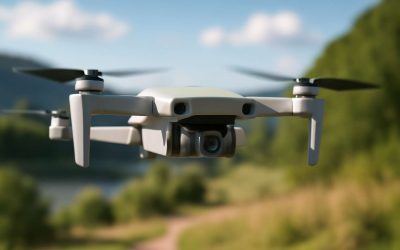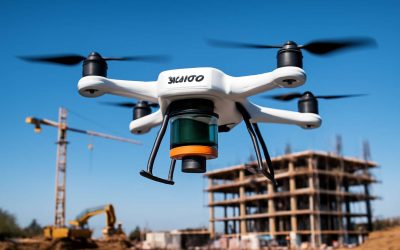
Thermal camera drones are an essential tool for a wide range of professional tasks, including inspections, search and rescue operations, and even firefighting. Unlike traditional cameras, which create RGB images, thermal imaging systems provide heat maps that can reveal important details such as the location of hotspots or other abnormalities.
Using the right drone and camera can make a huge difference to your job, so it’s important to take into account all the different elements that go into choosing a thermal sensor and putting one on a drone. The main factors to look out for are sensor resolution, image format, and radiometric data.
Resolution is the number of pixels in an image, which reflects how much information is available to the sensor. The higher the resolution, the more accurate measurements are likely to be.
This is especially true for thermal drones, which use infrared technology to see through a layer of air, revealing temperature changes. This is a critical capability, because heat can be hard to detect from the ground.
Another important factor to consider is the camera’s zoom capacity. Thermal drones often have a powerful zoom feature, which can help you get close-ups of a particular area for a detailed assessment.
The TZ20R from FLIR is an example of a high-resolution thermal camera that can zoom in on its target, making it perfect for surveying. It has two high-quality Boson sensors with 640 x 512 pixel resolution, which can be combined with a 4.9mm wide-angle lens to produce a 95o field of view.
It has a dual radiometric sensor, too, which helps you capture high-resolution, detailed images that can help you understand complex situations and pinpoint the source of problems. This makes it a great choice for professionals who need to scan large areas quickly, and it’s also ideal for search-and-rescue work, because the zooming capabilities allow you to identify individuals in dangerous situations.
Other features of the TZ20-R include a picture-in-picture mode that superimposes thermal images on normal camera images for improved situational awareness. It also has a 16x zoom function and supports 4x lossless zoom, so you can take in more details of your scene.
The Zenmuse XT2 from DJI is another good option for anyone looking to fly a thermal camera drone. It has a powerful sensor that can be mounted on multiple drones, such as the Inspire 1.
Radiometric data is a key feature of most thermal cameras and it allows you to accurately measure the temperature of objects. This is particularly important for industrial applications, where a broad temperature range can be vital to identifying and avoiding potential damage.
While this type of data is available across a number of thermal camera drones, it’s worth bearing in mind that the data is not always accurate, so it’s crucial to check with your local regulations and take an extended training course to operate in the dark. You’ll also want to be aware that the weight of a thermal camera drone can mean it’s not allowed to fly in certain places.



0 Comments